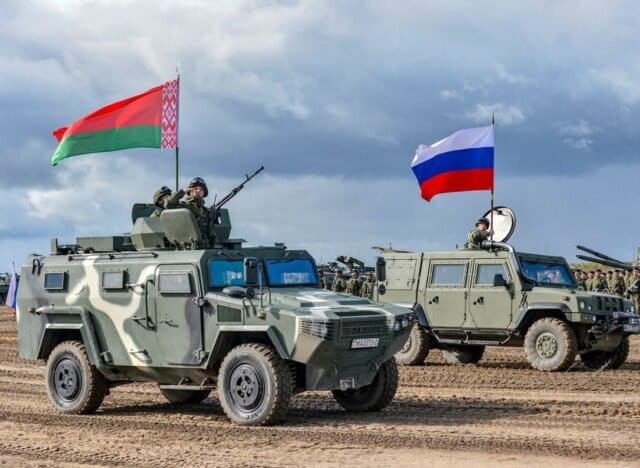Russia and Belarus Announce Joint Military Drills Amid Rising Tensions in Ukraine
In a significant escalation of military cooperation, Russia and Belarus have announced plans to conduct joint military exercises in Belarus from September 12 to 16, 2025. This development comes at a time of heightened tensions in Eastern Europe, particularly in the context of the ongoing war in Ukraine, which has seen a series of conflicts and territorial disputes. The announcement signals a deepening alliance between the two nations, raising concerns among Western nations and neighboring states.
Background & Context
The relationship between Russia and Belarus has historically been characterized by close political and military ties, but the war in Ukraine has intensified these connections. Since the onset of the conflict in 2022, Belarus has provided logistical support to Russian military operations, making it a pivotal player in the regional dynamics. The upcoming military exercises will not only showcase the capabilities of the two nations but also serve as a demonstration of their solidarity amid international sanctions and diplomatic isolation from the West.
Belarusian President Alexander Lukashenko has often defended his alliance with Russia, framing it as essential for national security. With Ukraine continuing to face challenges on multiple fronts, including recent developments that have seen Russian forces cut key supply routes, the joint exercises are expected to enhance Belarus"s military readiness and operational capacity.
Key Developments
The joint military drills, dubbed "Slavic Brotherhood," will involve thousands of troops and a range of military assets, including armored vehicles, artillery, and air support. Officials from both countries have indicated that the exercises will focus on enhancing interoperability between their armed forces and simulating responses to potential threats, particularly from NATO. This strategic positioning is viewed as a direct challenge to the Western military alliance, which has been ramping up its presence in Eastern Europe in response to perceived Russian aggression.
Military analysts suggest that these drills could also serve as a testing ground for new tactics and equipment, as both nations seek to modernize their forces. The planned exercises are not merely a show of strength; they are indicative of a broader strategy to solidify military cooperation and deter NATO’s influence in the region. As previously reported, the heightened military activity in Eastern Europe has raised alarms about a potential escalation of hostilities, particularly as both sides prepare for future conflicts.
Broader Impact
The implications of these joint exercises extend beyond the borders of Belarus and Russia. Neighboring countries, particularly those in the Baltic region and Poland, are closely monitoring the situation, fearing an increase in military tensions. The prospect of enhanced Russian military capabilities on NATO"s eastern flank has prompted discussions among alliance members about bolstering their own defenses. Experts warn that the exercises could provoke a more aggressive response from NATO, leading to an arms race in the region.
Moreover, the announcement underscores the shifting geopolitical landscape in Europe, where traditional alliances are being tested. Analysts argue that the deepening ties between Russia and Belarus could embolden other non-Western states to pursue similar partnerships, potentially leading to a reconfiguration of power dynamics on the continent. The ongoing war in Ukraine, coupled with the growing military collaboration between Moscow and Minsk, poses significant challenges to European security and stability.
What"s Next
As the date for the military drills approaches, the international community will be watching closely. Diplomatic efforts to de-escalate tensions in Ukraine have so far yielded limited results, and the joint exercises may further complicate peace initiatives. NATO is likely to respond by increasing its military presence in Eastern Europe, which could escalate the situation further. Observers are also keen to see how Ukraine will adapt its military strategies in light of the evolving threat landscape.
In the coming months, the focus will be on the outcomes of these exercises and their impact on regional security. The potential for increased military confrontation remains high, and the actions taken by all parties involved will be crucial in shaping the future of Eastern European geopolitics. As tensions simmer, the world remains vigilant, anticipating the next moves in this complex international chess game.








![[Video] Vladimir Putin delivers speech in military uniform](/_next/image?url=%2Fapi%2Fimage%2Fthumbnails%2Fthumbnail-1764621642413-vh08a-thumbnail.jpg&w=3840&q=75)